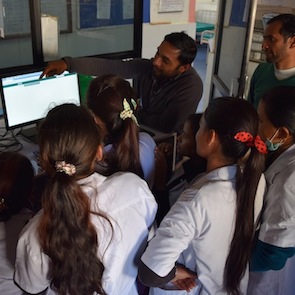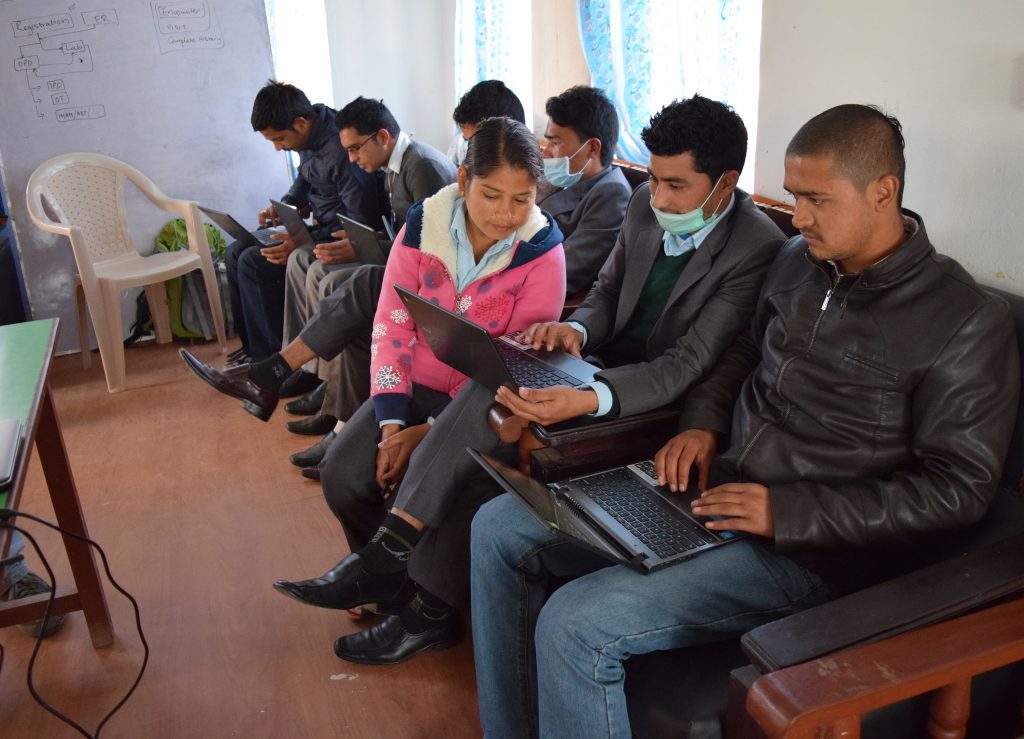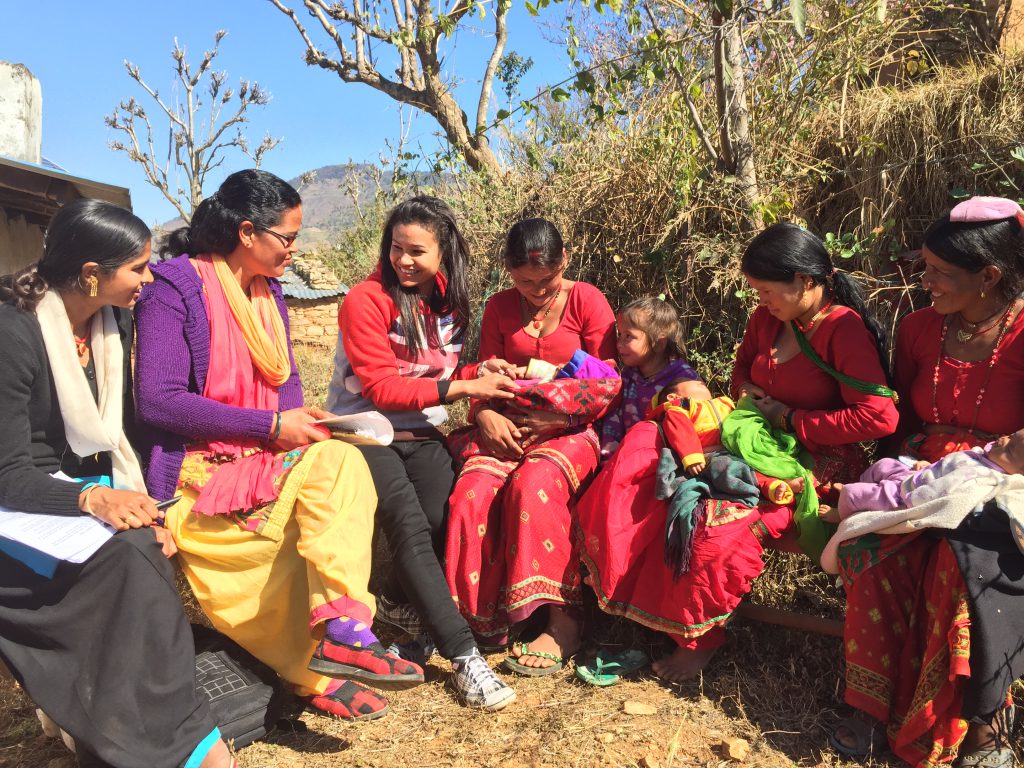Digitizing Healthcare: Why Having an Electronic Medical Record Matters
March 10, 2015 - The Possible Team
Around the globe, our lives are increasingly transformed by technology, with healthcare perhaps one of the most impressive arenas for these changes.
And in many doctor’s offices around the world, with a few clicks of the mouse, your physician can retrieve all of your medical history through the use of an Electronic Medical Record (EMR) system.
EMR’s have many benefits that help solve for the patient (a.k.a. making healthcare more accessible and tailored to a patient’s specific needs, and delivering it in a dignified, quality way).
Getting an instant record of a patient’s medical history facilitates improved patient care via more accurate diagnoses and treatments, the ability to instantly share health information to multiple clinicians, and the reduction of errors and inconsistencies found when recording patient health information by paper. An EMR system also opens up avenues for better reporting, research, and quality improvement, and integrates into digital lab, x-ray, and other systems.
Therefore, we’re thrilled to announce that after two years of work with ThoughtWorks, we launched one of rural Nepal’s first EMR systems.
The Rise of EMR’s
The emergence of EMR’s and the idea to record patient information digitally began in the 1960’s. It rose to new heights in the 1990’s after The Institute of Medicine (IOM) published a study that exposed the dangers of paper-based patient record systems and argued for components of EMR’s that would lead to better patient care.
However, adoption of EMR systems in the U.S. is still fairly new. It wasn’t until 2005 when the use of EMR’s really began to increase; less than half of doctor’s offices have basic EMR systems for their patients. Paradoxically, about 13% of office-based physicians reported having the intention to use them productively to produce “meaningful use.”
Yet the money is still flowing in: as of 2009 U.S. healthcare providers spent $2.18 billion on EMR’s, and that number is expected to increase to over $6 billion this year.
Efficiency Is a Moral Must
Typically, EMR cost is high, the technology is advanced, and the adoption around the world is quite rare — especially in remote settings of poverty.
However, the core of Possible’s work comes down to how effective management systems can improve the quality of healthcare delivery. One of our For-Impact Culture Code principles states “Efficiency is a Moral Must,” so in order to solve for the patient, we set out to implement our own EMR system.
To date, all of our patient data was recorded by paper and then re-entered manually into multiple access databases — a method that was typically effective due to our strong management system, but still vulnerable to error and inaccuracy.
Prior to our EMR, when a patient first interacts with our healthcare system, they receive a packet with a unique ID number where their medical history will be manually recorded: diagnosis, medicines prescribed, lab test results, appointments attended and missed.
But the problem with paper is multifold; our focus on longitudinal and follow-up care (versus only providing one-stop care at a hospital hub) means clinicians at surrounding clinics or Community Health Workers working in villages don’t have immediate access to a patient’s record. In addition to accessibility is the issue of accuracy: clinician handwriting can be illegible and misread, and the paper can be lost or destroyed. Lastly, patient dignity and confidentiality are at risk since the information is not electronically protected.
Now our doctors at Bayalpata Hospital are able to access patient data within their individual departments. In a year’s time, we will extend our EMR system beyond our hospital to two more tiers of our integrated healthcare model, so our implementing partners at health posts, along with our CHW’s, will also be able to access data. We will also leverage the expertise of our partner hospitals at urban centers 36 hours away, who can read x-rays and lab reports instantly and correspond with our team about patient care.
Lastly, we used to hand-deliver our paper records to the District Health Office every month, which is two hours away over mountainous terrain. Now these reports will be compiled and sent electronically with a simple click.
Beyond Collecting Data
The improved accessibility of patient data is only one part to the puzzle. The more pressing challenge is how we teach our team to use the EMR in a way that will connect to better patient care.
“It’s an interesting shift,” says Alex Harsha, researcher at Possible. “It’s not just putting data down — it’s learning how to utilize that data, how to synthesize it, how to look for the right things to make smarter clinical decisions.”
This challenge in practice is a hurdle not often thought or talked about.
We’re the first to admit adoption will be a challenging journey. Training our Nepali staff to use an EMR system effectively to make quicker and smarter medical decisions will be a process, and — as with all of our work — requires iteration. Receiving user feedback, working through new bugs, and the simple transition of moving from old to new, paper to electronic, will also take time. For instance, some of our team members have had limited exposure to computers, so we need to train them on computer literacy first.
As this year unfolds, our plan is to perfect its use at our main hospital hub while continuing to enter patient data by hand. In about a month, we will eliminate our paper data recording system. We hope to implement the EMR at the clinic and community level by March 2016, a huge challenge that’s especially crucial to our work.
(Registering our first EMR patient)
Abhinav Peddada, a business analyst from ThoughtWorks who worked closely on our EMR system, spoke to the potential of the EMR to transform our healthcare model and evaluative focus on longitudinal and follow-up care:
“What we’ve seen in other rural places is that patients with chronic diseases like Tuberculosis and HIV fall through the cracks. The ability to track their health overtime — whether he is improving of not, if he missed his last appointment or not, what this lab was versus that one — is so much easier for CHW’s and doctors to evaluate and act on with an EMR. If it’s electronically stored, it doesn’t degrade, it’s easy to track over time, and shows important trends immediately.”
“The Trust In Your Healthcare System”
Many of Thoughtworks’ global health projects are in rural areas around the world, yet they told us that of all their implementations in remote places, where we work is the most inaccessible.
“It’s amazing some patients walk eight days to get here,” says Peddada. “It shows the trust your patients have in your healthcare system here. And whatever little ThoughtWorks is doing, I hope that adds to that trust.”
The road will be a long one, but this step of launching one of rural Nepal’s first integrated EMR systems is a bold one, and we are confident it will strengthen our ability to provide remarkable results for our patients by utilizing data, strong systems, and our team’s grit to get crucial work done.
—–
Compelled by our work digitizing healthcare for the world’s poor? Join us in proving what’s possible.
See this piece published on Medium.






